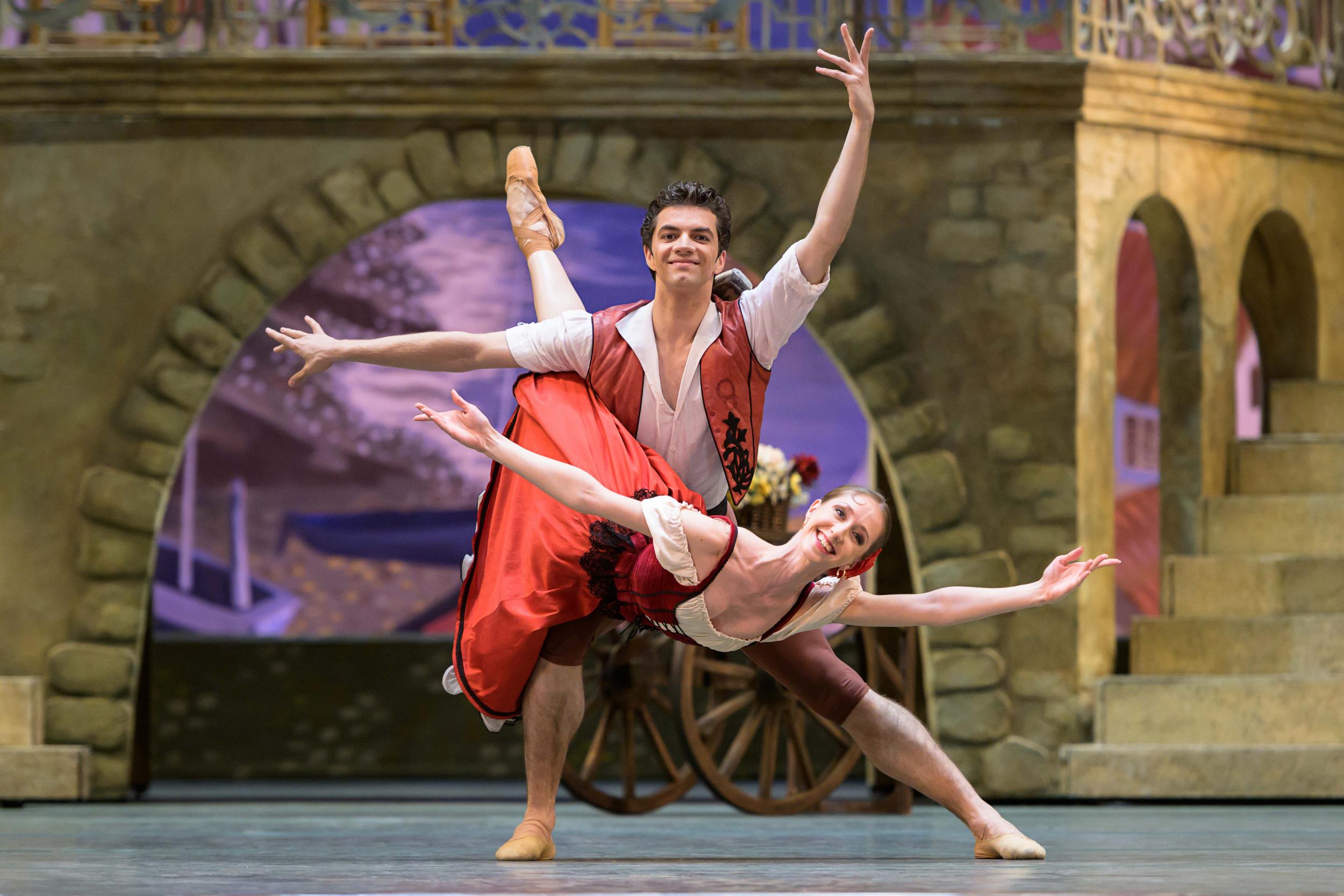Don Quixote, The Bolshoi Ballet, review: Production romps and bustles with Russo-Spanish élan
Antonina Chapkina, who plays the Queen of the Dryads, is touchingly regal, though she pushes too hard in her demanding solo

Your support helps us to tell the story
From reproductive rights to climate change to Big Tech, The Independent is on the ground when the story is developing. Whether it's investigating the financials of Elon Musk's pro-Trump PAC or producing our latest documentary, 'The A Word', which shines a light on the American women fighting for reproductive rights, we know how important it is to parse out the facts from the messaging.
At such a critical moment in US history, we need reporters on the ground. Your donation allows us to keep sending journalists to speak to both sides of the story.
The Independent is trusted by Americans across the entire political spectrum. And unlike many other quality news outlets, we choose not to lock Americans out of our reporting and analysis with paywalls. We believe quality journalism should be available to everyone, paid for by those who can afford it.
Your support makes all the difference.The Bolshoi Ballet’s Don Quixote is both fun and a little underpowered. The ballet is a cheerful Spanish fantasy, all castanets and ruffles and big, bravura steps. It suits the Moscow company’s extrovert style, but it needs stronger personalities to really catch fire.
When Marius Petipa created Don Quixote for the Bolshoi in 1869, he used the novel as a jumping-off point. Cervantes’ melancholy knight wanders through the action, and even tilts at a windmill or two, but most the action is taken up with village lovers Kitri and Basil. Her father wants her to marry a rich fop, but of course true love triumphs, with flurries of toreadors, street dancers and other characteristic inhabitants of Ballet Spain.
Alexei Fadeyechev’s 2016 production is bright and robust. Valery Leventhal’s designs have the bold shapes and colours of a vintage travel poster, with blue seas, red roofs and sturdy windmills.
As Kitri, Margarita Shrainer is too colourless for a role that demands temperament. Don Q isn’t subtle: the famous “Kitri” jumps involve kicking the back leg so high that the dancer almost hits her own head, both explosive and high-flying. Shrainer’s technique is secure, but she doesn’t bring out the daredevil flair, or the mischief of Kitri’s teasing relationship with Basil. She’s efficient but unmusical in her final solo, with speedy footwork and a fluttering fan to the tinkling harp of Minkus’s bouncy score.
Her best dancing comes in the vision scene. Knocked unconscious, Alexei Loparevich’s courtly Don immediately dreams an entire formal corps de ballet setpiece, all clear lines and tutus. The slower, cooler sequences show off Shrainer’s line and composure.
As Basil, Igor Tsvirko has more dash. Ripping through a sequence of bounding jumps, he keeps back enough power to give the last leap extra oomph – the kind of flair and showmanship that this ballet needs. He’s a strong partner in the one-handed lifts, but could be funnier in the storytelling.

As the Queen of the Dryads, Antonina Chapkina is touchingly regal in her mime scene with Quixote, though she pushes too hard in her demanding solo. As Cupid, Elizaveta Kruteleva leans into the sugariness of the role, all scampering jumps and coy head tilts.
Kristina Karasyova brings presence and wit to the role of Mercedes, with effortlessly deep backbends. Ruslan Skvortsov needs more macho fervour as the bullfighter Espada, but partners cleanly. The Bolshoi company romp and bustle with Russo-Spanish élan.
Join our commenting forum
Join thought-provoking conversations, follow other Independent readers and see their replies
Comments